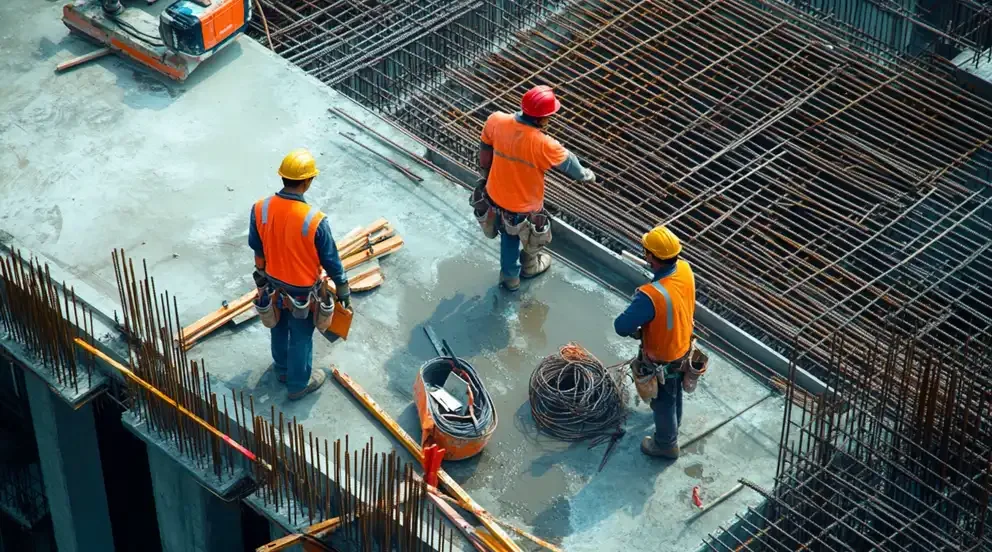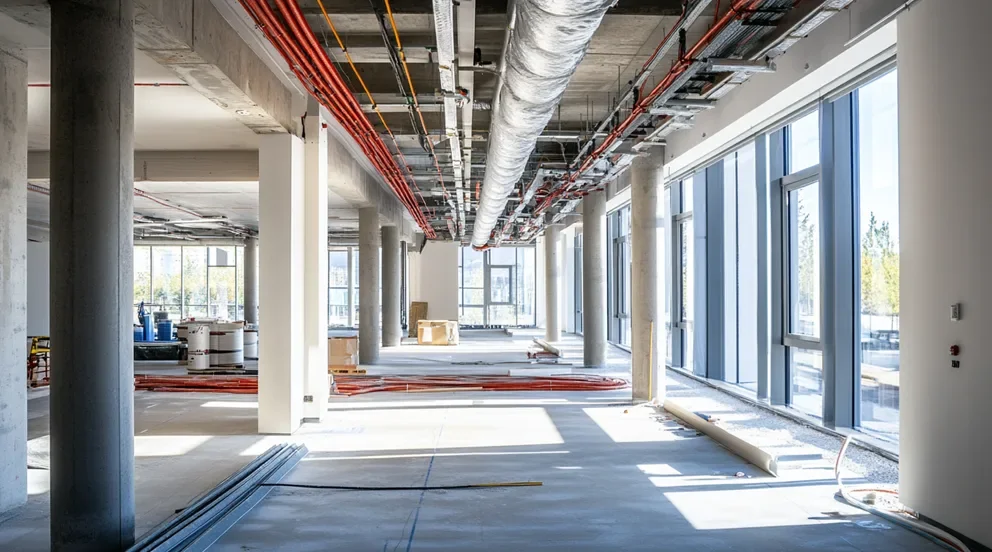Construction proposals examples refer to documented plans or pitches for construction projects. These examples serve as templates or inspiration for creating new construction proposals. They outline the scope, timeline, costs, and other essential details needed to begin a construction project. Such examples are instrumental for construction firms, architects, and engineers to visualize and plan their proposals effectively.
Importantly, construction proposals examples vary widely depending on the type and scale of the project. For residential projects, the proposal might focus on timelines, cost estimates, and design mock-ups. In contrast, commercial projects might include detailed technical specifications, environmental assessments, and long-term maintenance plans. Each example provides a unique perspective on how to approach potential construction projects, highlighting the importance of customization and detailed planning.
Moreover, construction proposal examples often include successful strategies for winning bids. They demonstrate how to effectively communicate the project’s value and feasibility to clients or stakeholders. This includes highlighting past successes, the project team’s expertise, and the proposed project’s benefits. These examples serve as a crucial tool for anyone in the construction industry looking to secure new projects or expand their portfolio.
Construction proposals examples are an essential tool in the construction industry. They provide a structured framework for presenting construction projects to clients, investors, or stakeholders. By examining these examples, professionals can gain insights into effective strategies for proposal writing. This introduction aims to explore the significance and utility of construction proposal examples in greater detail.
This exploration will delve into different types of construction proposals, showcasing how they adapt to various project needs and client expectations. From residential to commercial and infrastructure projects, each type demands a specific approach in the proposal phase. Highlighting these differences will offer readers a comprehensive understanding of what makes a successful construction proposal.
Lastly, the article will discuss best practices in crafting a construction proposal. Through analyzing examples, we will extract key components that contribute to a compelling and effective proposal. These insights will not only guide readers in preparing their construction proposals but will also help them understand the competitive landscape of the construction industry.
An effective construction proposal is a document that outlines the specifics of a construction project. It serves as a blueprint for both the builder and the client. Mastering its structure is crucial for anyone in the construction industry. Firstly, this robust document should start with an executive summary. This section succinctly presents the project scope, aims, and objectives. Furthermore, it lays the groundwork for the detailed narrative that follows.
Subsequently, the proposal should delve into the project background. Here, it’s important to describe the need for the project and its significance. This section not only sets the stage but also connects emotionally with the reader, highlighting the project’s impact.
A detailed scope of work section follows. It must list all tasks to be completed, materials required, and project milestones. Clarity in this part is key to avoiding misunderstandings later. Additionally, it should outline the project timeline, offering a clear schedule of each phase of construction.
Another vital section is the cost estimate. This includes a comprehensive breakdown of all expenses. It should cover labor costs, materials, and any other project-related expenses. Transparency in this section builds trust with the client.
Equally important is the inclusion of legal and regulatory considerations. This part addresses any permits or regulations relevant to the project. It ensures that all parties are aware of the legal framework governing the construction.
Lastly, the proposal should conclude with a section on qualifications. This showcases the expertise and experience of the construction team. It reassures the client of the team’s capability to deliver the project successfully.
In adhering to this structure, the proposal becomes an invaluable tool. It ensures clear communication, sets realistic expectations, and paves the way for project success. Appreciating and implementing this framework is crucial for any construction professional aiming to craft winning proposals.
Essential Elements to Include in Every Construction Proposal
Creating a comprehensive construction proposal is a critical step in securing new projects and clients. It serves as a foundation for clear communication, setting expectations, and outlining the scope of work. To ensure your proposal is effective, several key elements should be included.
Firstly, a detailed project description is vital. This section should clearly articulate the project’s objectives, scope, and specifications. As a result, potential clients can understand what to expect. It’s important to describe the project in straightforward terms, avoiding jargon when possible.
Secondly, the inclusion of a timeline is essential. It provides clients with a realistic expectation of how long the project will take from start to finish. Furthermore, a well-defined timeline helps in planning resources and managing workload effectively.
Next, a transparent cost breakdown is crucial. This section should itemize costs for materials, labor, permits, and any other expenses related to the project. Consequently, clients feel more comfortable knowing where their investment goes. Also, it minimizes the risk of disputes over costs later on.
Additionally, qualifications and experience should be highlighted. Showcase your team’s skills, certifications, and past projects to build trust and credibility. Including testimonials or references can further enhance this section.
Moreover, a clear payment schedule is imperative. It should outline when and how payments are to be made, aligning with project milestones. This arrangement helps in maintaining a steady cash flow and sets clear financial expectations.
Finally, a section on terms and conditions is necessary. This part covers warranties, insurance, and dispute resolution procedures. As such, it protects both parties and outlines how unforeseen circumstances will be handled.
In conclusion, a well-constructed proposal integrates all these elements seamlessly. It not only demonstrates professionalism but also sets the stage for a successful project execution. By adhering to these guidelines, your construction proposals will undoubtedly stand out, fostering trust and paving the way for fruitful collaborations.
Strategies for Highlighting Your Unique Value Proposition
In the competitive world of business, standing out is essential. Your Unique Value Proposition (UVP) is a critical factor in distinguishing your offerings from those of others. It encapsulates what makes your product, service, or brand unique and desirable. Thus, effectively communicating your UVP is paramount. Below are strategies for doing just that.
Firstly, clarity is crucial. Ensure your UVP is straightforward and easily understood. This means avoiding jargon and complex language. A clear UVP allows potential customers to grasp quickly why they should choose you over competitors.
Secondly, focus on benefits. While features are important, benefits directly address your potential customers’ needs and pains. Highlight how your product or service improves their lives or solves a specific problem. This connects emotionally, making your proposition more compelling.
Moreover, authenticity plays a significant role. Your UVP should reflect the true essence of what you offer. Exaggerations or untruths can damage trust. Genuine statements about your value can foster strong relationships with your audience.
Another strategy is to leverage testimonials and success stories. These serve as proof of your UVP in action, providing tangible evidence of the benefits you claim. Sharing stories of satisfied customers or successful projects adds credibility and can sway potential clients in your favor.
Lastly, consistency across all marketing materials reinforces your UVP. Every piece of content, from your website to your social media posts, should reflect the core message of your value proposition. This unified approach ensures that your audience receives the same message, regardless of how they encounter your brand.
In sum, effectively highlighting your Unique Value Proposition hinges on clarity, focus on benefits, authenticity, leveraging testimonials, and consistency in messaging. These strategies not only distinguish you from the competition but also build trust and loyalty among your target audience.
Tips for Crafting Clear and Comprehensive Project Timelines
Creating an effective project timeline is crucial for the success of any project. It serves as a blueprint that guides the entire team through the various phases, helping to manage expectations and ensure that all tasks are completed on schedule. First and foremost, define the scope and objectives of your project. Understanding what needs to be achieved is the foundation of a comprehensive timeline.
Secondly, break down the project into manageable tasks. This involves listing every step required to complete the project, no matter how small. By doing so, you create a detailed roadmap that makes it easier for everyone involved to follow progress. Additionally, this helps in identifying any potential bottlenecks that could delay the project.
Moreover, assign realistic deadlines to each task. Consider the complexity of each step and the availability of your team members. Always make sure to build in some buffer time to accommodate unforeseen delays. This approach minimizes stress and ensures that your project stays on track, even when unexpected issues arise.
Furthermore, keep the communication lines open. Share the timeline with all team members and stakeholders, and update it regularly. This ensures that everyone is on the same page and can adjust their contributions as needed. Regular updates also provide an opportunity for feedback that could further refine the timeline.
Lastly, use appropriate project management tools. These tools offer features like Gantt charts and timeline visualizations that make it easier to track progress and make adjustments. They can greatly enhance the clarity and accessibility of your project timeline.
Remember, a clear and comprehensive project timeline is more than just a schedule. It is a dynamic tool that helps your team navigate through the complexities of the project, ensuring successful completion. With these tips, you can create a timeline that is both realistic and effective, setting the stage for your project’s success.
Avoiding Common Pitfalls in Construction Proposal Writing
Crafting a winning construction proposal is both an art and a science. This document not only represents your ability to complete a project but also showcases your professionalism and attention to detail. Thus, avoiding common pitfalls in construction proposal writing is crucial for setting your bid apart.
Firstly, clarity and precision in descriptions matter immensely. Ambiguities or over-generalizations can lead to misunderstandings and, subsequently, disputes. Ensure that every aspect of the project, from timelines to materials, is outlined clearly. Also, include detailed cost estimates to build trust with your clients.
Secondly, underestimating the competition is a mistake often made by many. Always conduct thorough research on your competitors. Understand their strengths and weaknesses to tailor your proposal in a way that highlights your unique selling propositions. Knowing your competition allows you to position your offer more strategically.
Moreover, neglecting the importance of a well-designed proposal can be detrimental. Remember, the visual presentation of your document can speak volumes about your company’s professionalism. Utilizing a clean, engaging layout helps in ensuring that your proposal is reader-friendly. Incorporating visuals like charts or graphs can also make complex data more understandable.
Additionally, failing to proofread your proposal can lead to costly errors. Always double-check for grammatical mistakes, typos, or inaccuracies in your cost estimates. Such errors can undermine your credibility and demonstrate a lack of attention to detail.
Lastly, overlooking the necessity to follow client specifications can significantly decrease your chances of securing a project. Adhere strictly to the guidelines provided by your client. Tailor your proposal to meet their specific needs and requirements.
In conclusion, by avoiding these common pitfalls, you can enhance the quality of your construction proposals. This approach increases your chances of not only winning the contract but also establishing a long-term relationship with your clients. Paying attention to detail, doing your homework, and presenting your proposal professionally will set you up for success.



